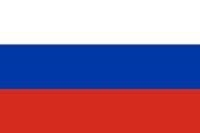
Peru Infrastructure Drives Coatings Demand
2024-07-16 14:15
The most featured project in the country’s expanding infrastructure is the $3.5 billion Chancay Multipurpose Port Terminal project.
Colorful Peruvian streets. (Photo source: World Bank)
Peru’s booming infrastructure developments is driving a growing demand for paints and coatings, riding the recent turnaround in the country’s gross domestic product (GDP) expansion.
“Peru's gross domestic product expanded 5.28% in April from a year earlier, the government's INEI statistics agency said on Saturday, the highest rate in 32 months,” Reuters reported on June 15.
Over the next several years, much of that momentum is expected to continue. “The Peruvian economy is expected to recover and grow 2.7 percent in 2024, following a slight contraction of 0.6 percent in 2023, which was attributed to unfavorable weather conditions, social unrest, and diminished business confidence. In 2025 GDP is projected to increase at around 2.4 percent,” the World Bank reported in April.
This upturn will benefit a host of domestic and international paints and coatings manufacturers, led by: Corporacion Crons Peru SA, with $96 million in sales; Anypsa Corporation S.A., with $84 million in sales; Pinturas del Perú S.A., with $31 million in sales; and Sherwin-Williams Peru S.R.L., with $20 million in sales, according to Dunn & Bradstreet statistics.
Sherwin Williams Peru has stores en Talara, Chimbote, Arequipa and Lima, the company reports.
While protective and other industrial coatings will be in great demand, the expanding residential housing and commercial building sectors also will increase demands for architectural paints, and more for the automotive aftermarket.
New Ports Lead Infrastructure Growth
The most featured project in the country’s expanding infrastructure is the $3.5 billion Chancay Multipurpose Port Terminal project, being built by Chinese state-owned Cosco Shipping. The project, which was begun in 2019 and slated for completion in 2025, is expected to boost Peru-China trade markedly.
“During a Port of Los Angeles conference call last week, APM Terminals regional head Leo Huisman said that COSCO’s investment in Peru is a game-changer, and is likely to transform how trade flows through the west coast of South America,” Reuters reported on March 24.
“The super-modern port will redefine how shipping lines will service the west coast of South America. I do believe that with its capabilities, its crane setup and its water depth, a lot of smaller ports in Chile, Peru and Ecuador will be served in future by a different concept - not any more big ships going in directly,” said Huisman, quoted by Reuters.
A more recent port project will serve a $2 billion mining development in Peru by a Chinese mining major, Jinzhao. In March, the government’s Private Investment Promotion Agency (Proversion), awarded a Jinzhao subsidiary rights the $405 million San Juan de Marcona port about 300 miles south of the capital of Lima.
“The multipurpose port is expected to attract mining investments worth $15 billion in the south of the country and improve logistics for the regions of Ica, Ayacucho, Apurimac, Cusco and Arequipa. The port will directly benefit the $2 billion Pampa de Pongo iron ore mining project, being developed by Jinzhao. Once fully operational, the project will produce over half of Peru’s seaborne iron exports,” Reuters reported in March.
Increasing Peru-China Trade and Investment
Multi-billion infrastructure projects are a boon to any country in Latin America, but the scale of these and other China-linked investments are calling into question the risk to Peru’s economy should the Chinese economy slow even more, as some predict.
In Latin America, the countries most exposed to a slowdown in the Chinese economy are those that have China as their main trading partner, namely Chile, Panama, Peru, Brazil and Uruguay. China absorbs 39% of Chile’s goods exports, and it absorbs 32% of the trade of both Panama and Peru (See CW March 2024).
Housing Demand Driven by Rising Per Capita GDP, Investment
The demand for new and remodeled housing in Peru is being facilitated by the rising per capital GDP, along with expanding government programs to build or finance new units.
“The Peru construction market size was $35.7 billion in 2023. The market will achieve an AAGR of 3% during 2025-2028. The growth is attributed to the rising investment in mining, housing, electricity, and transport infrastructure projects,” reported GlobalData in February.
More disposable income is key to the housing market expansion. “Macroeconomic stability, trade openness, and a favorable international environment [have] allowed the country to become an upper middle-income economy, with per capita income rising from $2,040 in 2002 to $7,126 in 2022,” the World Bank reports.
New and continuing government programs to increase housing are substantial, but still short of the market demand, according to Habitat For Humanity: “In Peru, to close the housing deficit, an annual budget of $2 billion is required for housing subsidies, yet the housing subsidy program receives approximately $300 million each year.”
Private sector and multilateral lenders are helping to close the housing finance gap in Peru. In July 2023, for example, Peru’s Fondo MiVivienda secured a $300 million in loans for sustainable housing programs from JP Morgan Chase Bank and secured by the Multilateral Investment Guarantee Agency (MIGA).
This set of loans helps bring social equity to the housing sector. MiVivienda Sostenible offers subsidized mortgage loans for the acquisition of sustainable housing, within which its Financiamiento Complementario Techo Propio program provides subsidized mortgage loans aimed exclusively at vulnerable and low-income families to enable them to purchase, build or improve their homes, and include basic services.
Fondo MiVivienda also is committed to allocate, to the extent possible, at least 50% of the funds obtained to finance mortgage loans granted to Peruvian women, according to Lenders League.
Automotive Sales in Peru Climb
Peru’s automotive manufacturing industry is still small. “The country produced approximately 29 thousand vehicle units in 2017, of which around 97 percent were assembled motorcycles and other three-wheelers,” according to a 2019 Statista analysis. “The quantity of trailers, semi-trailers and car bodies produced reached 760 vehicles in that same year,” the agency reported.
In contrast, the aftermarket for automotive paint is being supported by growing auto sales.
“Automotive Association of Peru (AAP) forecasts a 2.1% rise in light vehicle sales, reaching 167,907 units by year-end, compared to 164,486 units sold in 2023. Additionally, there is an anticipated 1.7% increase in heavy vehicle sales, totaling 17,624 units in 2024, slightly surpassing the 17,326 units sold in the previous year,” GlobalFleet reports.
Chinese auto manufacturers are capturing a growing share of auto sales in Peru. As of July 2023, “Chinese brands are making significant strides in the Peruvian automotive market, capturing a 20.1% share of light vehicle sales between January and May 2023. Leading the pack is Changan…commanding a 5.4% market share,” reported La Fundación Andrés Bello – Centro de Investigación Chino Latinoamericano, a joint Peru-China foundation.
“Another noteworthy contender in the Peruvian [auto] market is DFSK. The Chinese brands’ strategy revolves around offering an extensive range of SUVs, with Changan ranking as the second-best-selling brand in this segment, trailing only behind Toyota,” the foundation reported.
source:coatingsworld
More Hzinfo
- CHINACOAT 2024 | Li Peikun from Xinhui Chemical and Jiahui Technology: Innovation Leads the Way, Facing the "Intense Competition" in the Coatings Ind
- They will embrace the challenges of the global market with a more open attitude.
-
2025-01-17
- Jointly "Coating" a Bright Future! Xinhui Chemical and Jiahui Technology Stun at CHINACOAT 2024
- They will contribute their own strength to the prosperity and development of the industry and jointly move towards a better future!
-
2025-01-17
- Recommended products:SuoShi Chemical/Source Chemical outdoor matting agent based on durable acrylic resinT-550
- T-550 is a glyeidyl containing solid acrylie resin designed for applying in low acid value saturated carboxyl polyester powder coatings system as hardener using compatibility difference to achieve
-
2025-01-16


 English
English 简体中文
简体中文 Русский
Русский إنجليزي
إنجليزي